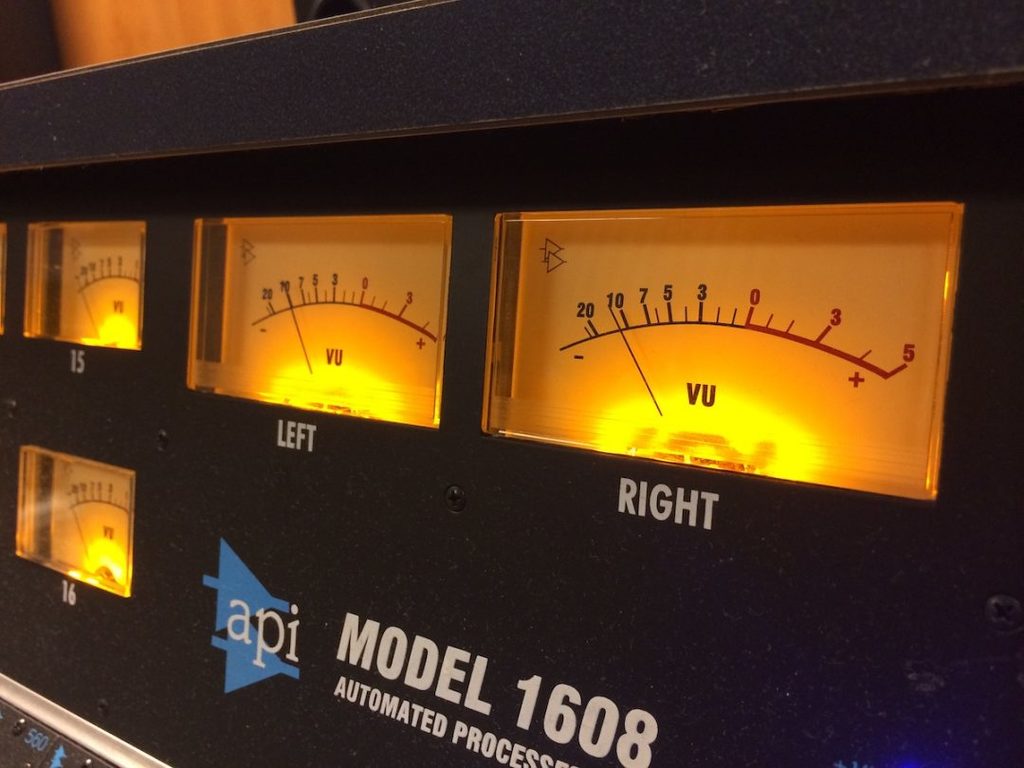- in Engineering by Bobby Owsinski
It Came From The VU Meter – Some Audio Metering History

Today there are so many different types of audio metering that we can choose that it can be overwhelming if you let yourself get caught up in it. The fact is that today’s many meter choices all descended from the standard analog VU meter, which is a lot older than you think. Here’s an excerpt from the 5th edition of my Mixing Engineer’s Handbook that gives a little history into audio metering.
How The VU Meter Came To Be
The standard VU (Volume Unit) meter was designed in 1936 in a joint effort by CBS, NBC and Bell Labs and was originally called the SVI, or Standard Volume Indicator. Since the meter scale was calibrated in Volume Units, that’s the name that stuck and became the analog VU meter that we’re used to seeing on all sorts of professional analog audio gear.
The VU meter was fairly cheap to implement, but had some limitations. For one thing it was rather slow to respond to a signal. That meant that a mix element with fast transients (like drums or percussion) could provide peaks that were as much as 10dB or higher over what the meter was indicating. Also, the meter was built to provide an RMS (an electronic calculation called Root Mean Square) or average value of the signal voltage.
The reference level was 0VU, and anything above was in the red zone and indicated a potential overload, which was true for some inexpensive prosumer type gear with low headroom and not so much for professional gear with a great deal of headroom. Later versions of the VU meter also included a peak LED that lit when a predetermined transient level was detected.
Enter The PPM
Because of these limitations there was a desire by many broadcast mixing engineers for a meter with a faster response. That meter was the PPM (Peak Program Meter), which actually began development before the VU meter in 1932. PPM meters didn’t actually measure the signal peak, but were a lot better at detecting those fast transients than normal VU meters were. They were a much more expensive than VU meters as well, which is one of the reasons why they were never put into widespread use in recording studios.
As solid state electronics became more mature and LEDs became cheaper and easier to use, LED segment meters gradually replaced VU meters on all sorts of pro audio gear. Instead of VU-style ballistics, these new meters acted more like peak meters in that they indicated a signal level up to 0 headroom (known as 0dBFS for Full Scale) with a red overload indicator, which we mostly use today in the digital domain.
We’re Just Getting Started
While the top of a meter scale is usually 0dBFS with an overload indicator above it, the rest of the meter can be calibrated in many different ways that help us view the signal in different ways. The most common types of digital meters used today include signal present, peak, RMS, K-scale, and LUFS.
Believe it or not there are other types of audio metering selections also available, including five versions of digital PPM metering, Linear, Linear Extended, and more. All are designed to do the same thing – tell us the level of the signal, and measure how close to an overload it is. The way this is displayed may be different, but they all serve the same purpose.
You can read more from the 5th edition of The Mixing Engineer’s Handbook and my other books on the excerpt section of bobbyowsinski.com.

